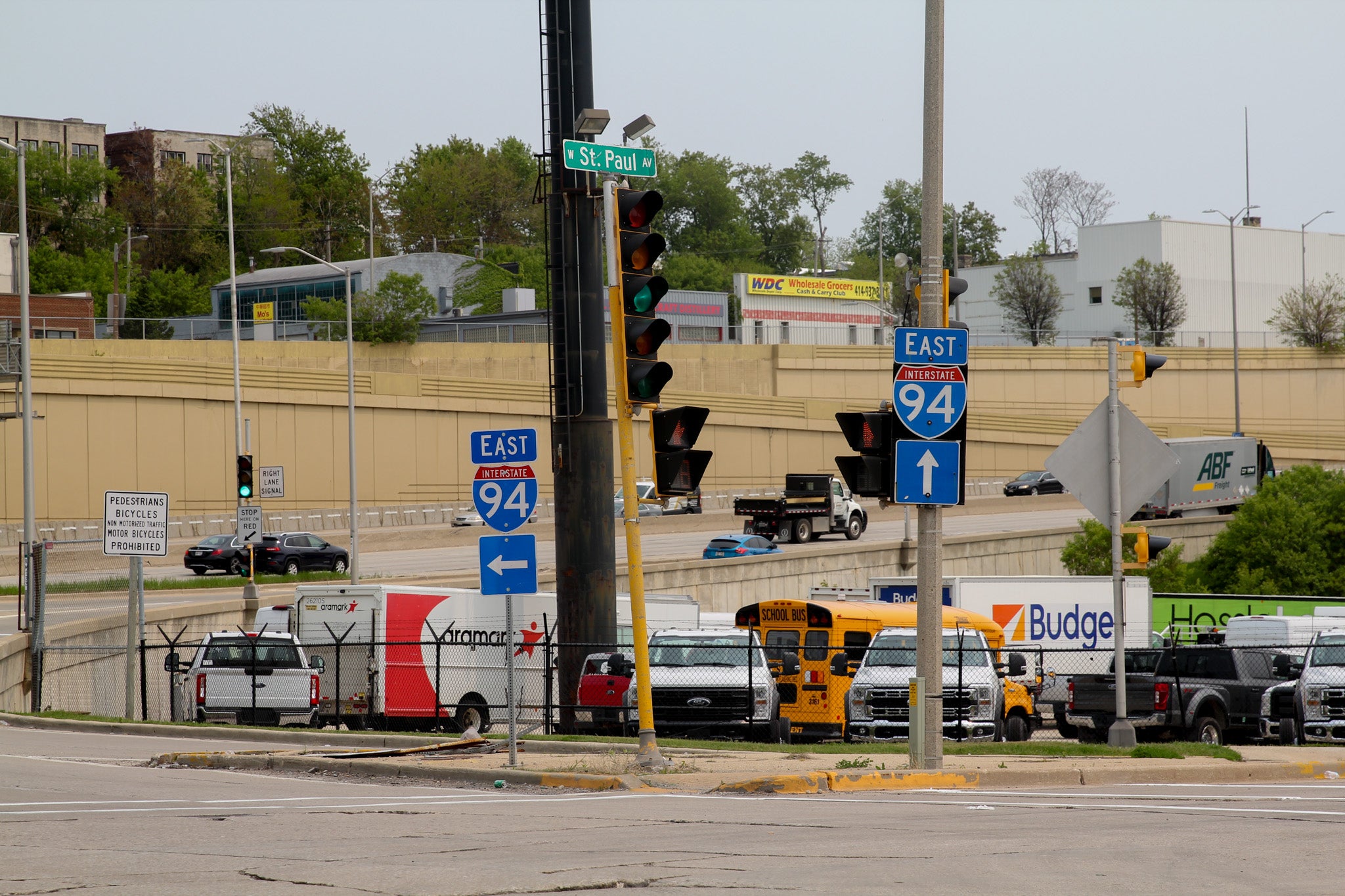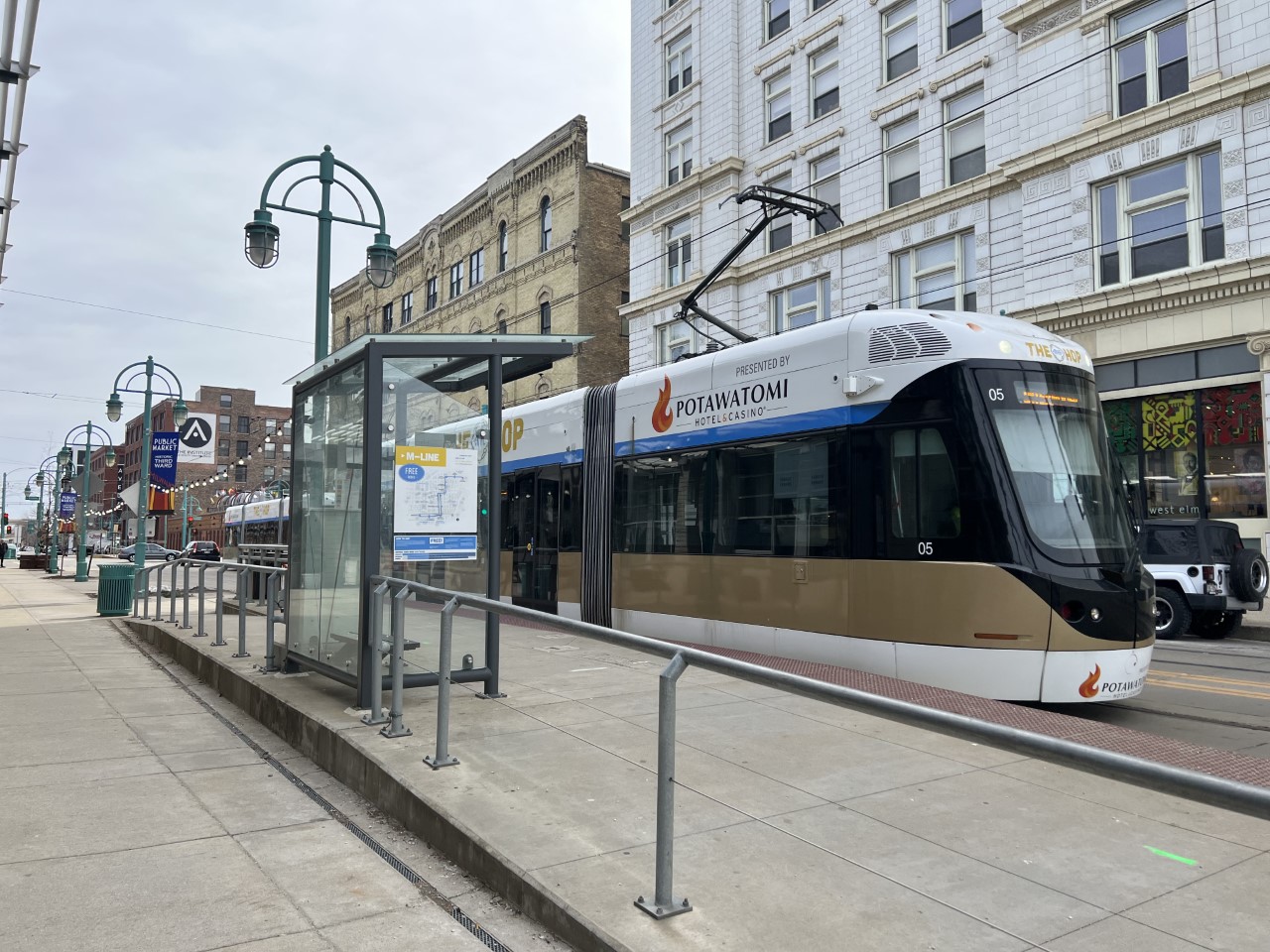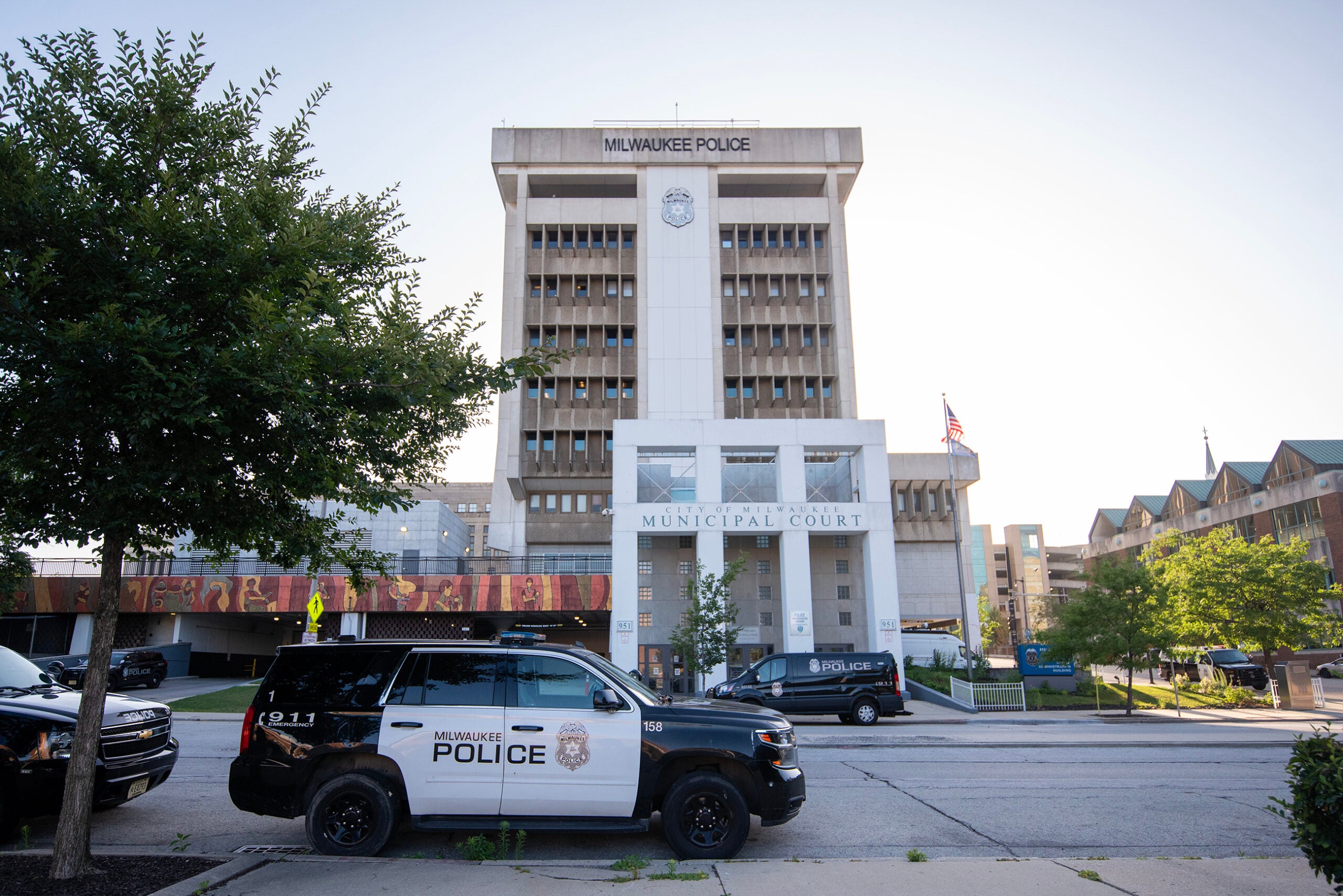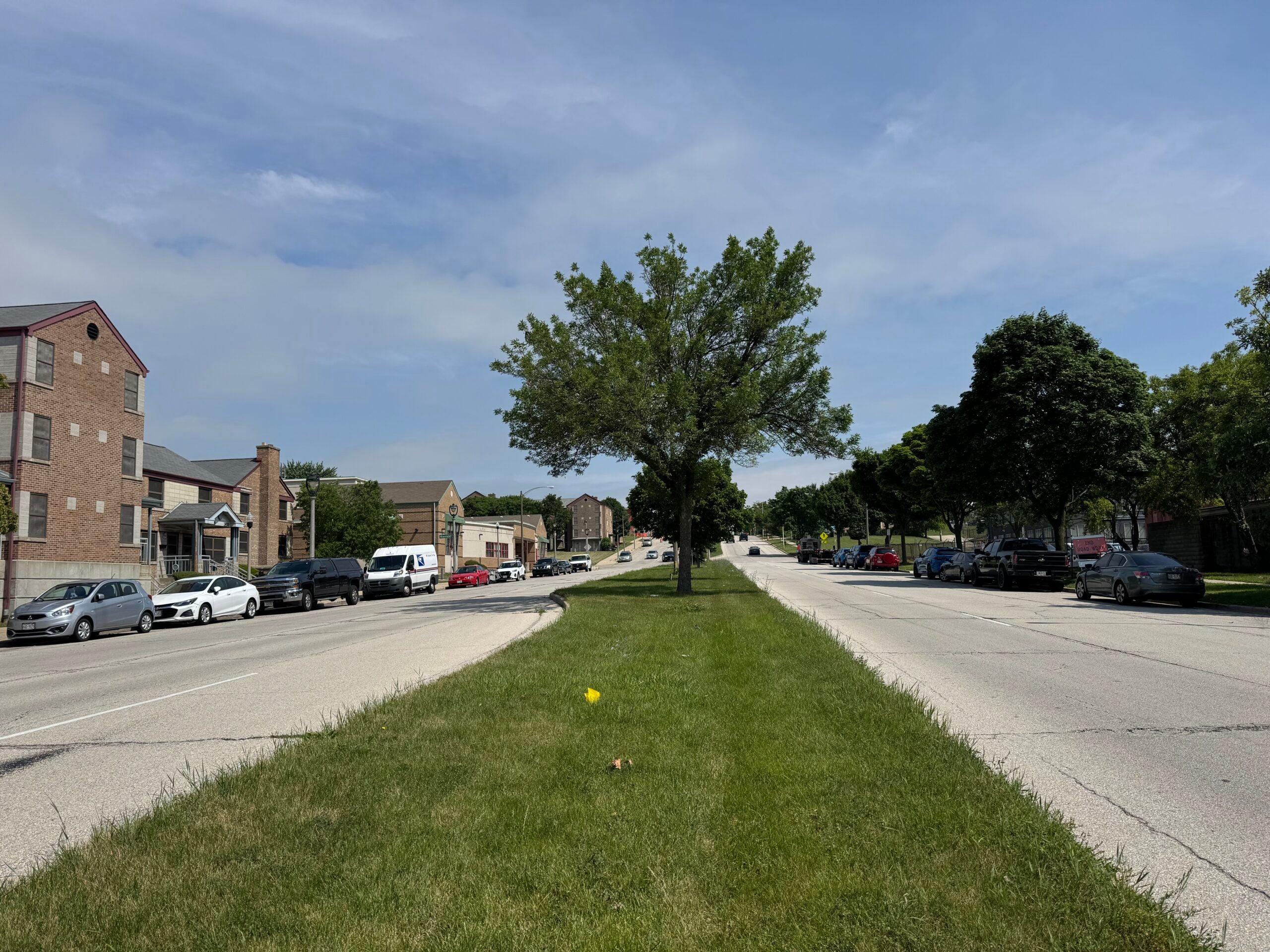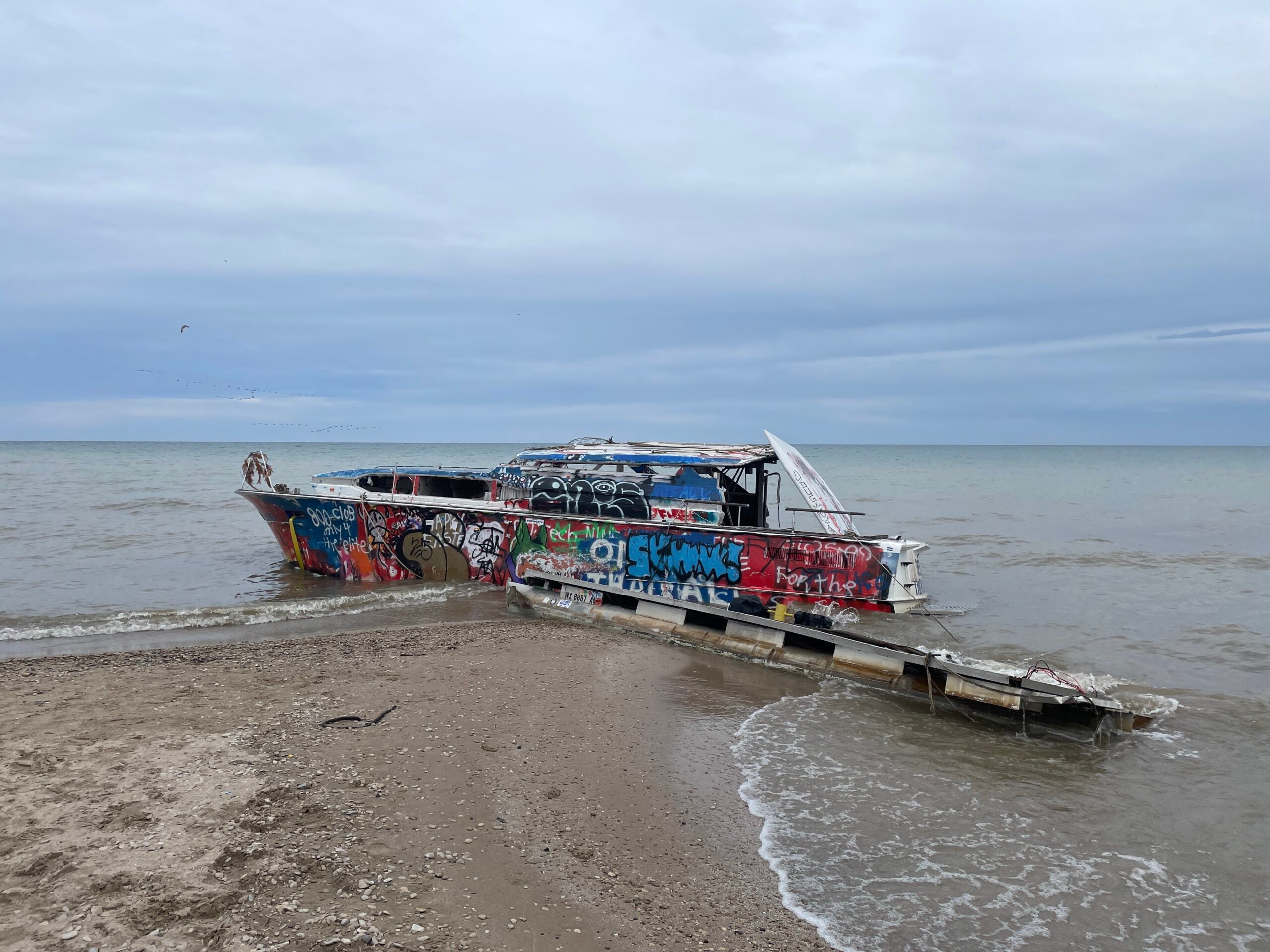Milwaukee’s I-794 Lake Interchange corridor is used by thousands of drivers every day, connecting visitors and residents to some of the city’s hottest attractions and largest employers. But now, a grassroots campaign is calling for its removal, while the city’s newly adopted downtown plan also wants to explore that option.
The interchange cuts through Milwaukee’s downtown and the Historic Third Ward. Bridge units on the corridor that were built in the 1970s now need to be replaced, according to the Wisconsin Department of Transportation. That’s renewed local calls for removing that portion of the elevated interstate, bringing public spaces and walkable surface-level streets to the area instead.
“We think there’s potential for generational change, something truly transformative,” said city planning manager Sam Leichtling.
News with a little more humanity
WPR’s “Wisconsin Today” newsletter keeps you connected to the state you love without feeling overwhelmed. No paywall. No agenda. No corporate filter.
The Milwaukee Common Council unanimously adopted it’s new Downtown Plan on Monday. It calls for exploring the eventual removal of the corridor, and transforming it “in a way that creates new places and connections.”
“The location and design of this freeway spur is in conflict with the overarching goal of a Connected Downtown and should be reimagined,” the plan states.
If the corridor is removed, it could be replaced with a grid of “comfortable multimodal streets, public spaces, and high-density mixed-use development,” according to the plan.
In 2002, the Park East Freeway was removed in Downtown Milwaukee. That removal helped pave the way for the Deer District — the popular entertainment district surrounding the Fiserv Forum — as well as the development of mixed-use housing redevelopments.
Proponents of removing the corridor, which include Milwaukee Alder Jonathan Brostoff, have pointed to the success of that $45 million project. Brostoff also said removing I-794 would be “transformational” for the city.
“Looking at I-794 right now, it’s one of the biggest impediments to a successful downtown,” Brostoff said during a recent city meeting. “The area it’s occupying and what it’s doing with that area is choking the life out of our downtown.”
Leichtling said the city is still estimating the potential value of development in that area, but he said it would likely be more than $500 million. Milwaukee Alder Bob Bauman, who represents Downtown Milwaukee and has favored removal for years, said that money could pay for needed services across the city.
Rethink 794, a grassroots group in favor of removal, believe doing so would generate $30 million in annual property tax revenue for the city and deliver new housing in a high demand area.
“We just want to step back and say, ‘There’s got to be a better use for this land than what’s being currently done with it,’” said Taylor Korslin, a member of the group.
Korslin believes the interstate system serves as a barrier to downtown and the Third Ward. He said possible new uses could include an outdoor public market or affordable housing.
“The possibilities are really endless,” he said.
The corridor is adjacent to the Summerfest Grounds as well as a high-rise under construction that will include 322 high-end apartments and 42,600 square feet of restaurant and retail space when complete.
Korslin said removing the interstate would free up about 30 acres of land. He said that would create a more walkable downtown that would be attractive to younger professionals and visitors from across the state.
“We have to think about this long-term and what the city’s going to become, what the city is going to evolve into in the next 50 years,” he said.
David Pittman, a project manager for the Wisconsin Department of Transportation, said they’re collecting public feedback and data about nine possible options for the corridor. Those concepts range from replacing the bridge units, to modifying the elevated freeway, to removing the interstate and bringing traffic to at-grade streets.
“I would say there’s not one that’s really bubbled to the surface as one that people really like,” Pittman said. “There’s a lot of diverse opinions and a lot of different interests that are out there, so we’ve heard a little bit of everything in all honesty.”
Pittman also said there were no cost estimates for any of the concepts yet.
“Ultimately, it’s the department’s (Wisconsin Department of Transportation) choice on which project gets chosen, in conjunction with the Federal Highway Administration,” he said. “But we’ll be taking input from the public, from Milwaukee County and city of Milwaukee, we’re working very closely with the city to try to match into what they’re looking at as well.”
Wisconsin Public Radio, © Copyright 2026, Board of Regents of the University of Wisconsin System and Wisconsin Educational Communications Board.

